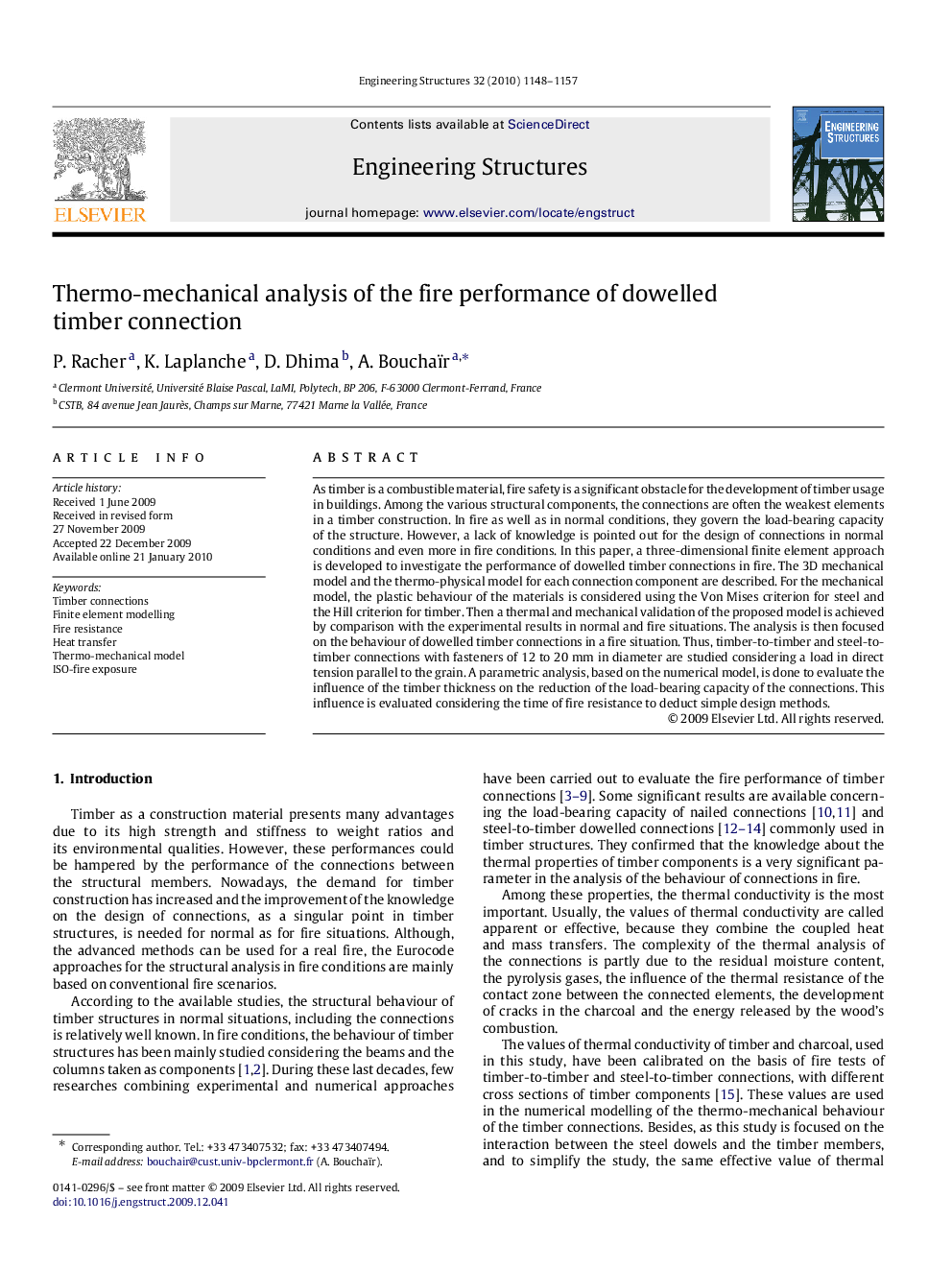| Article ID | Journal | Published Year | Pages | File Type |
|---|---|---|---|---|
| 267937 | Engineering Structures | 2010 | 10 Pages |
As timber is a combustible material, fire safety is a significant obstacle for the development of timber usage in buildings. Among the various structural components, the connections are often the weakest elements in a timber construction. In fire as well as in normal conditions, they govern the load-bearing capacity of the structure. However, a lack of knowledge is pointed out for the design of connections in normal conditions and even more in fire conditions. In this paper, a three-dimensional finite element approach is developed to investigate the performance of dowelled timber connections in fire. The 3D mechanical model and the thermo-physical model for each connection component are described. For the mechanical model, the plastic behaviour of the materials is considered using the Von Mises criterion for steel and the Hill criterion for timber. Then a thermal and mechanical validation of the proposed model is achieved by comparison with the experimental results in normal and fire situations. The analysis is then focused on the behaviour of dowelled timber connections in a fire situation. Thus, timber-to-timber and steel-to-timber connections with fasteners of 12 to 20 mm in diameter are studied considering a load in direct tension parallel to the grain. A parametric analysis, based on the numerical model, is done to evaluate the influence of the timber thickness on the reduction of the load-bearing capacity of the connections. This influence is evaluated considering the time of fire resistance to deduct simple design methods.
